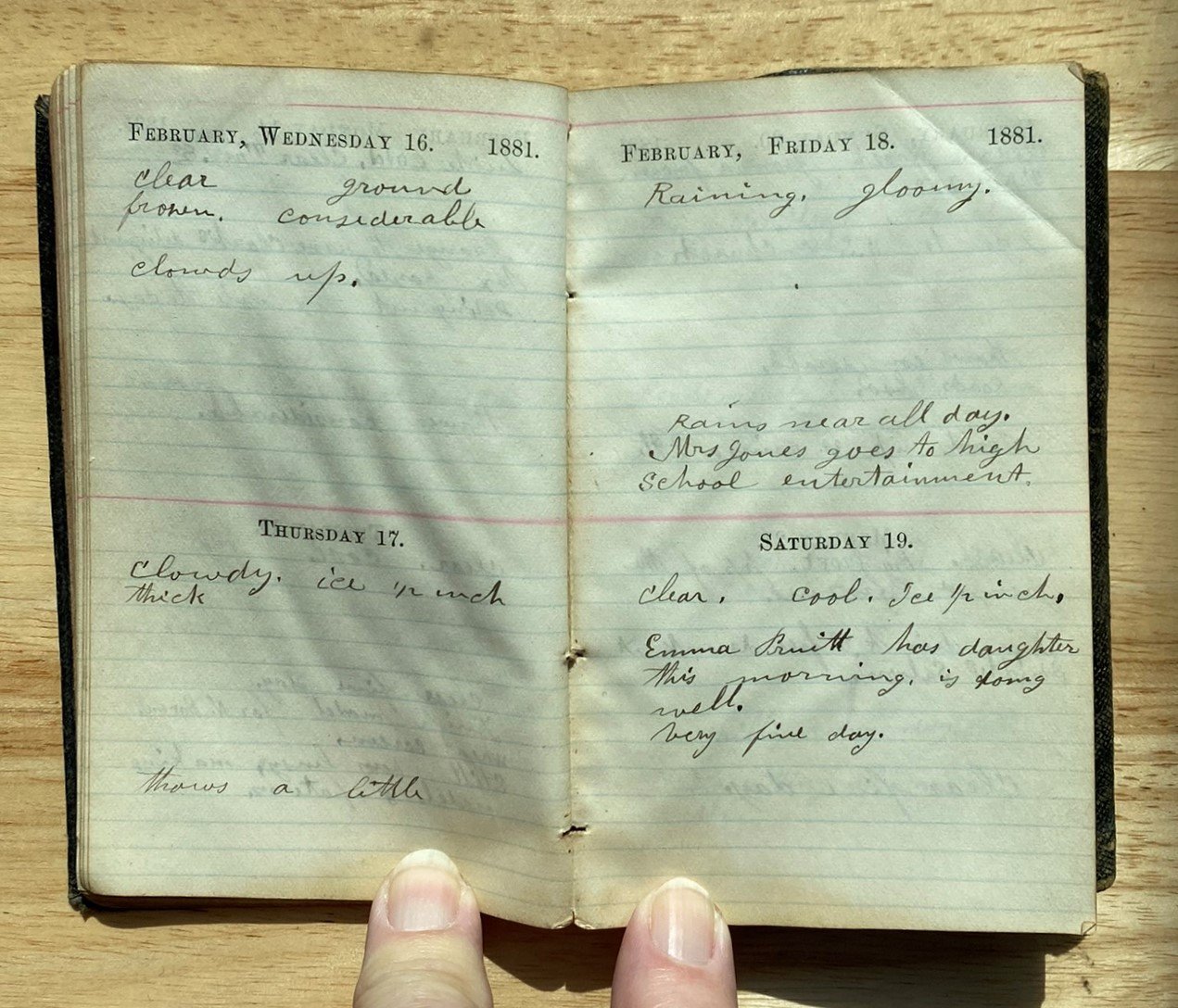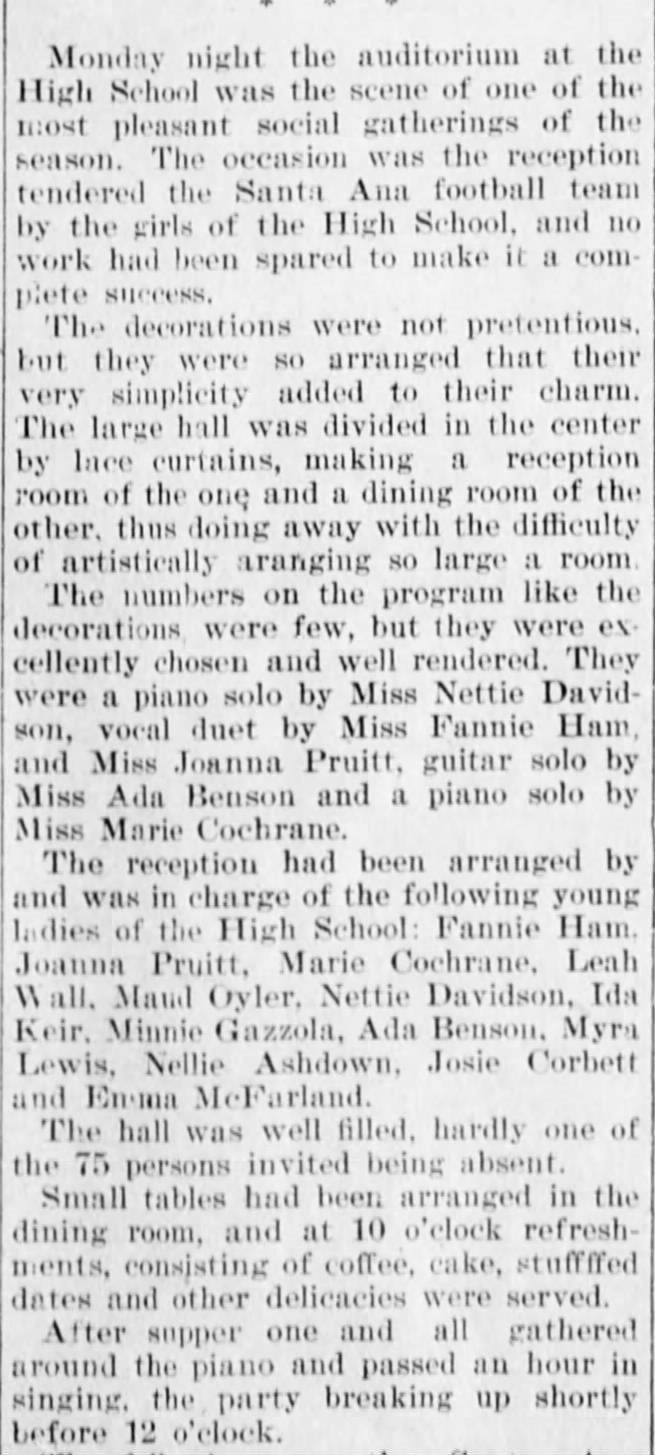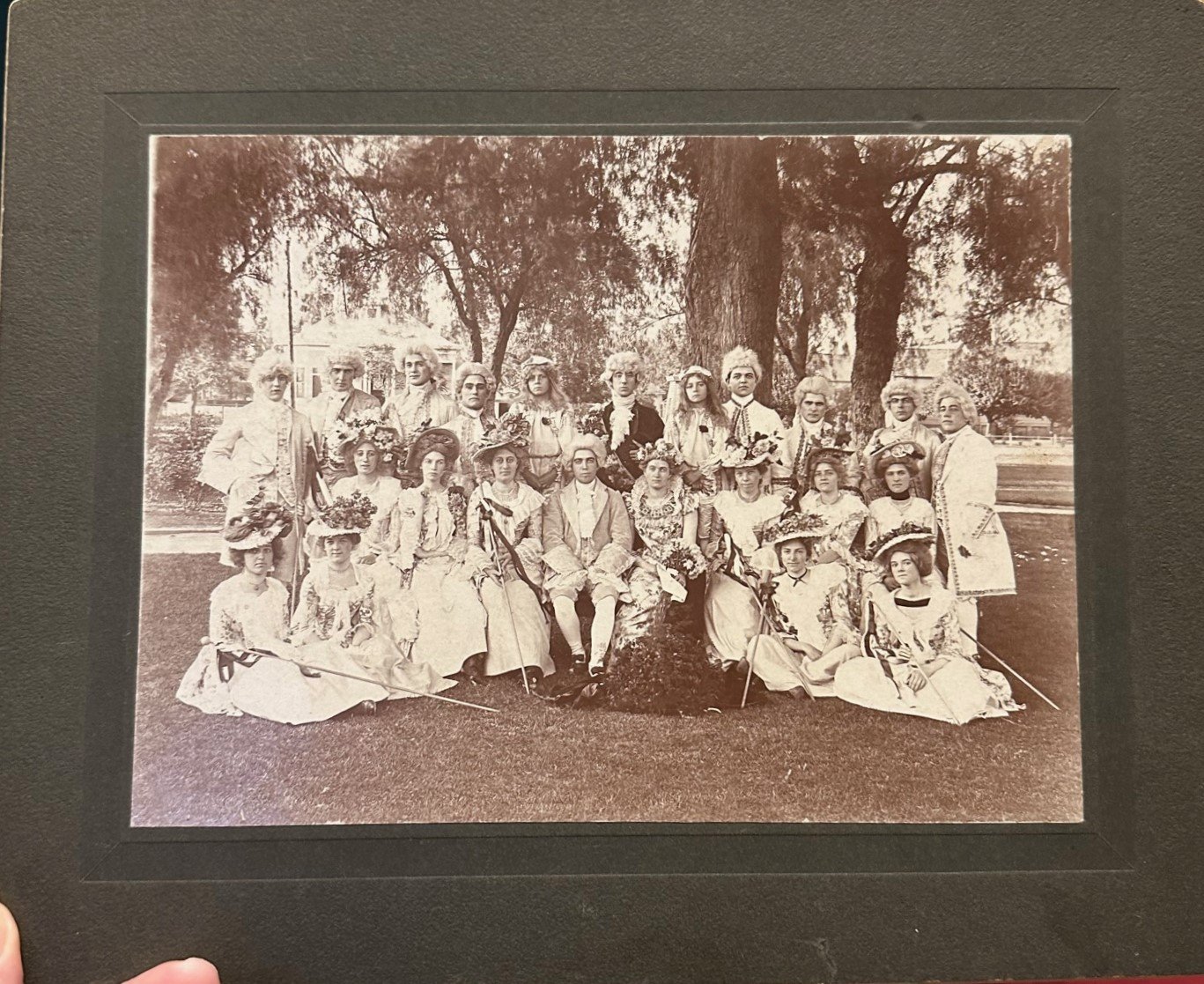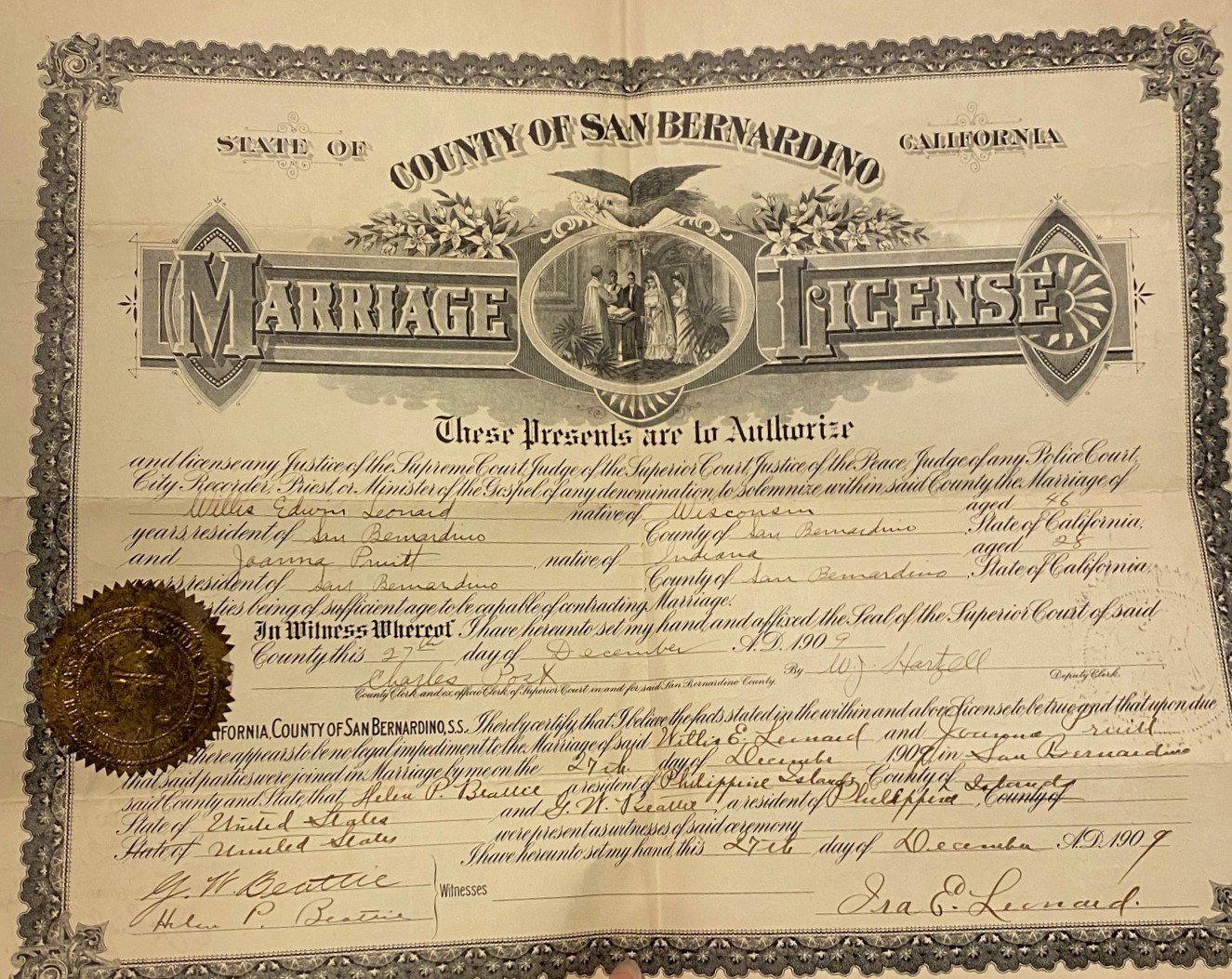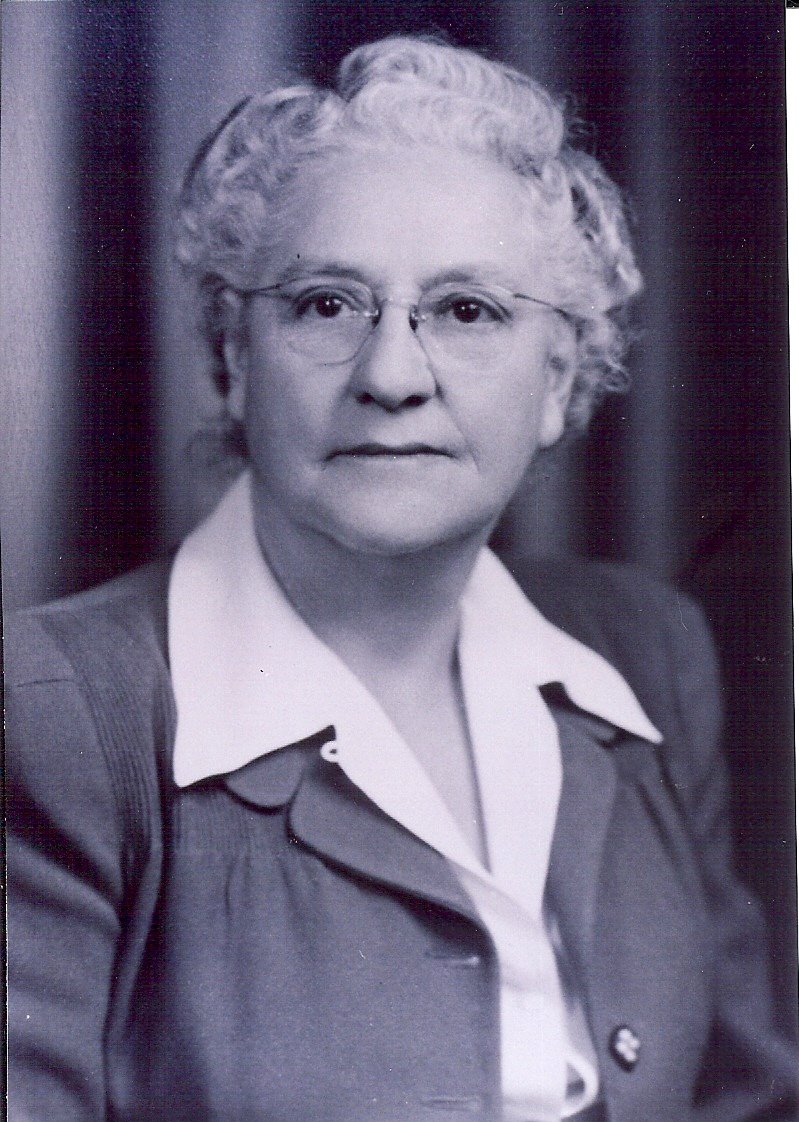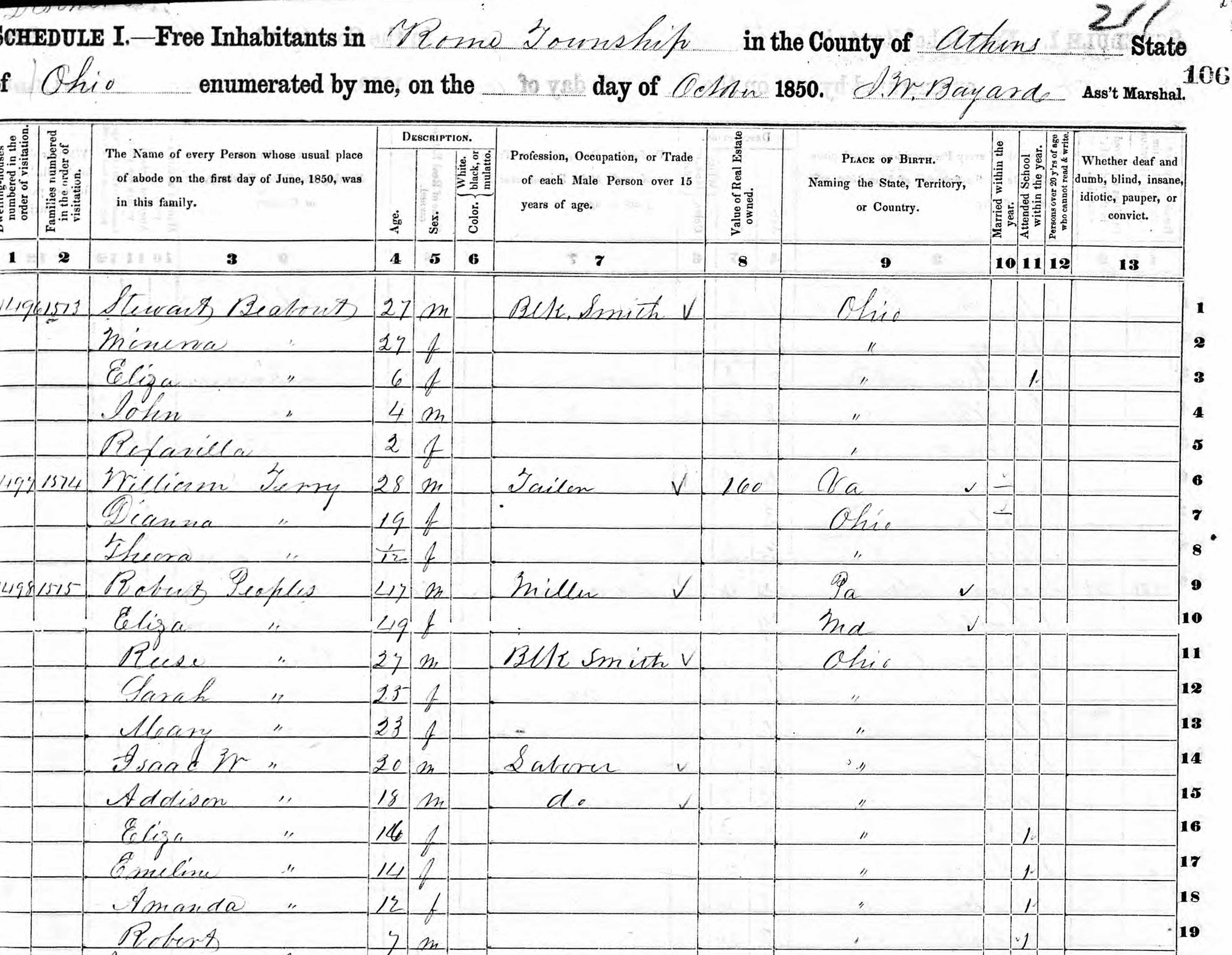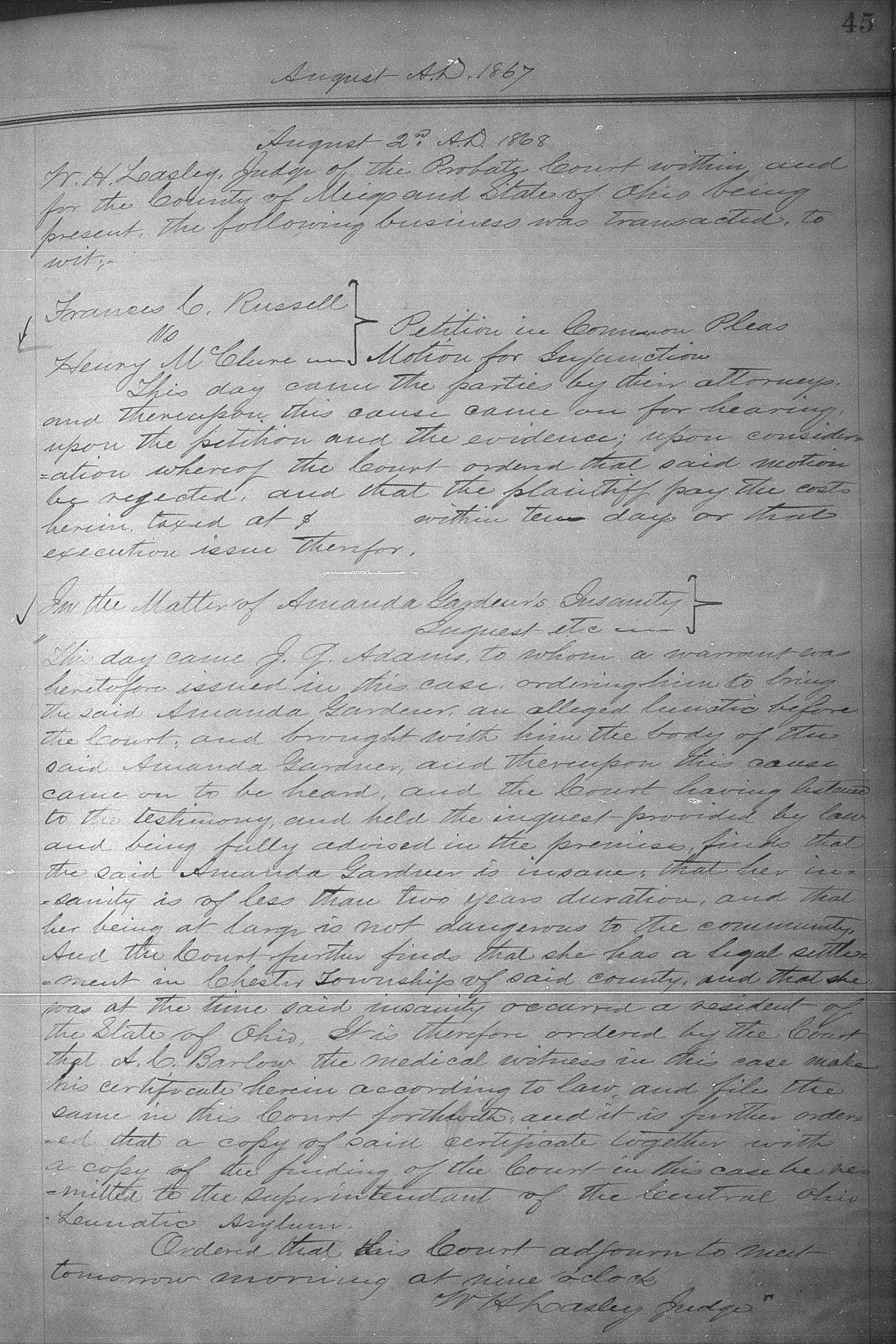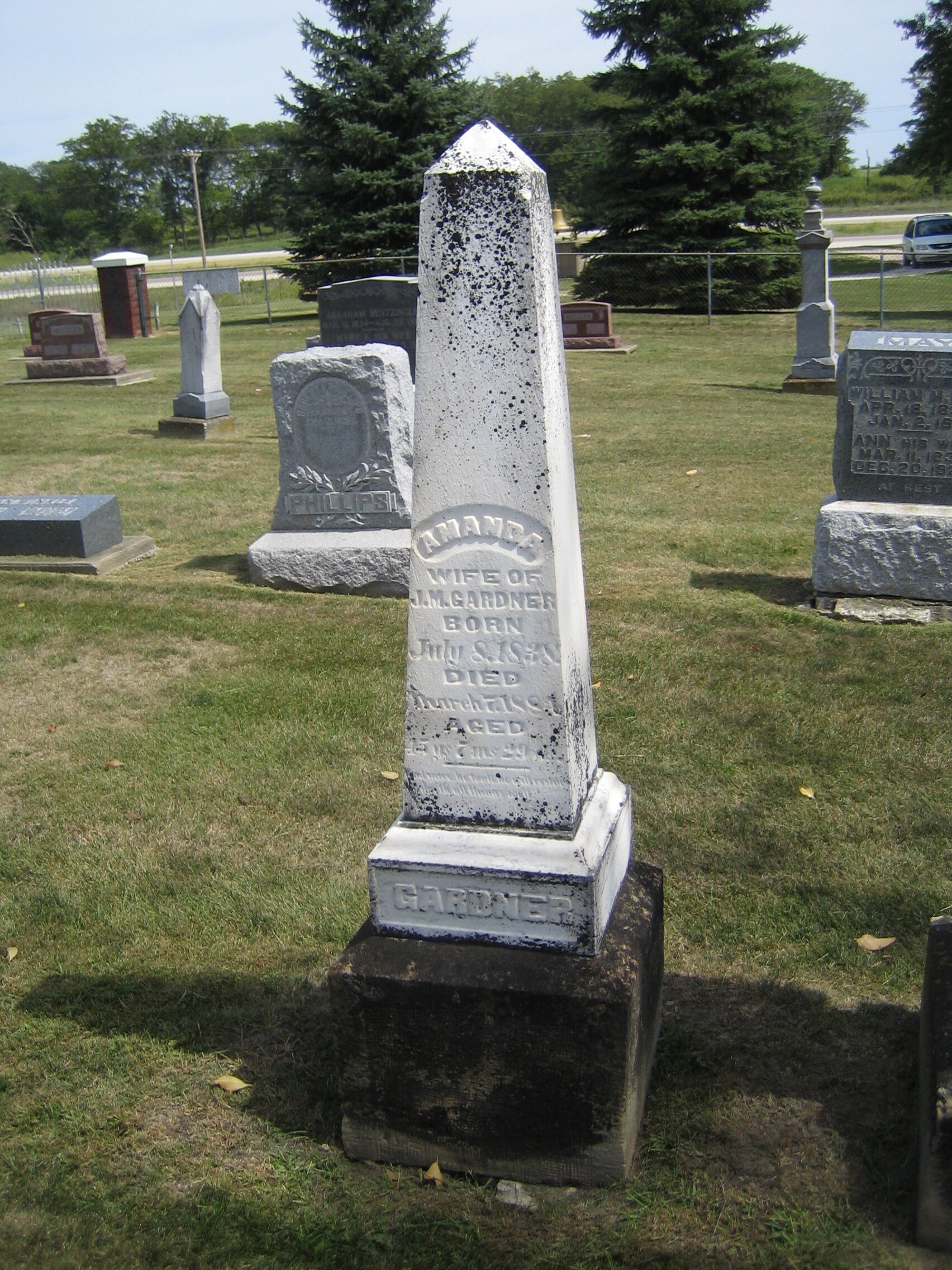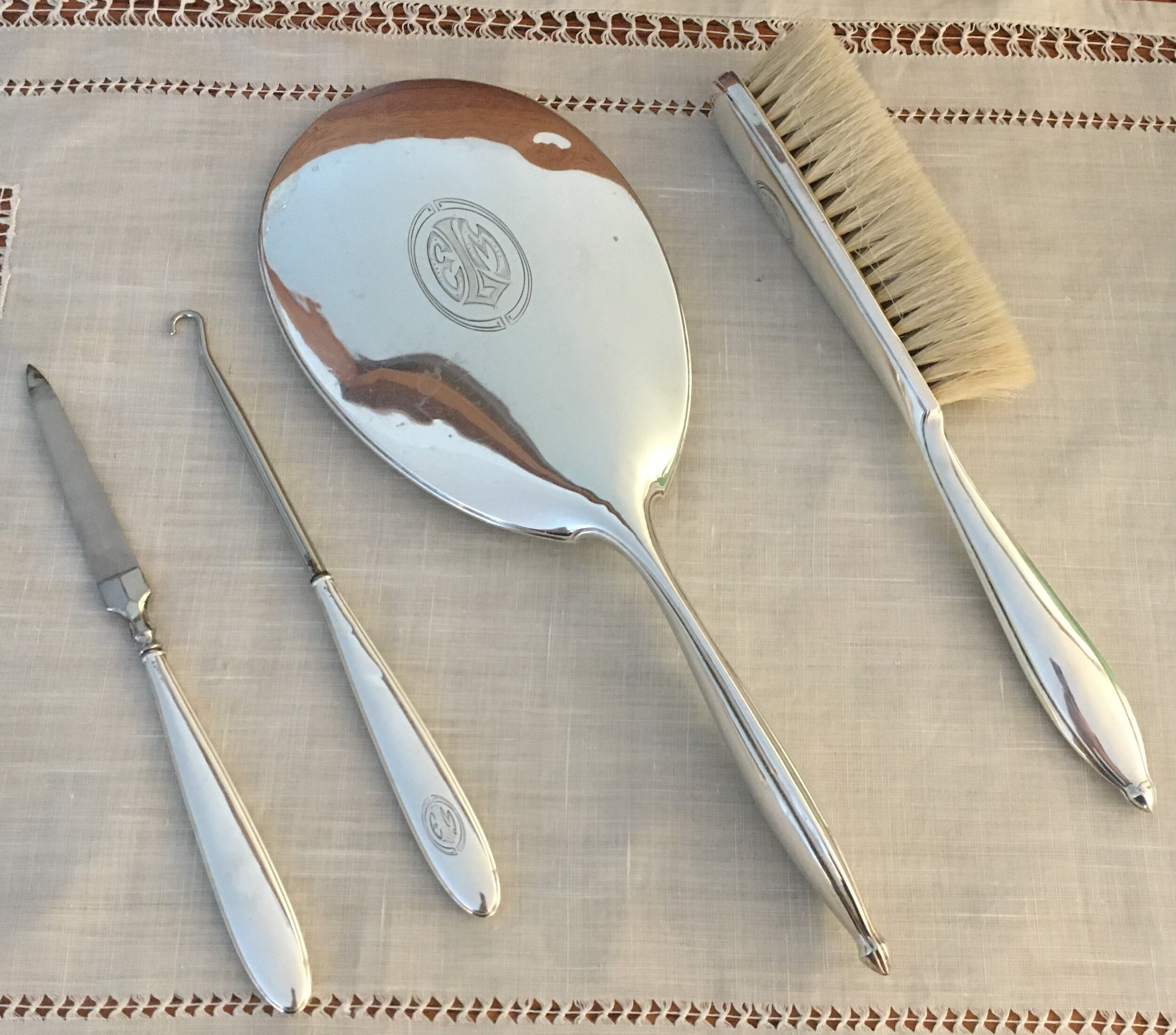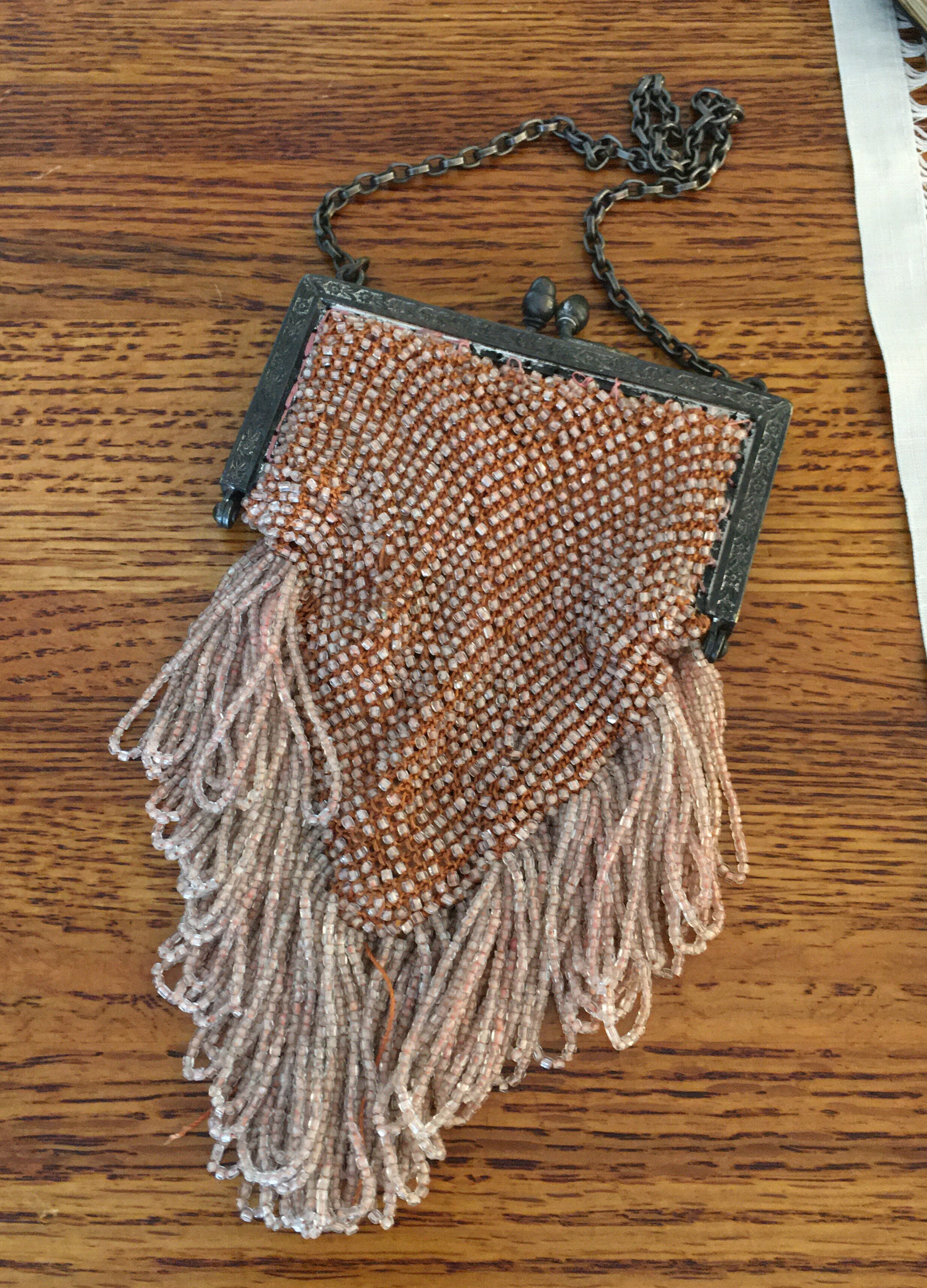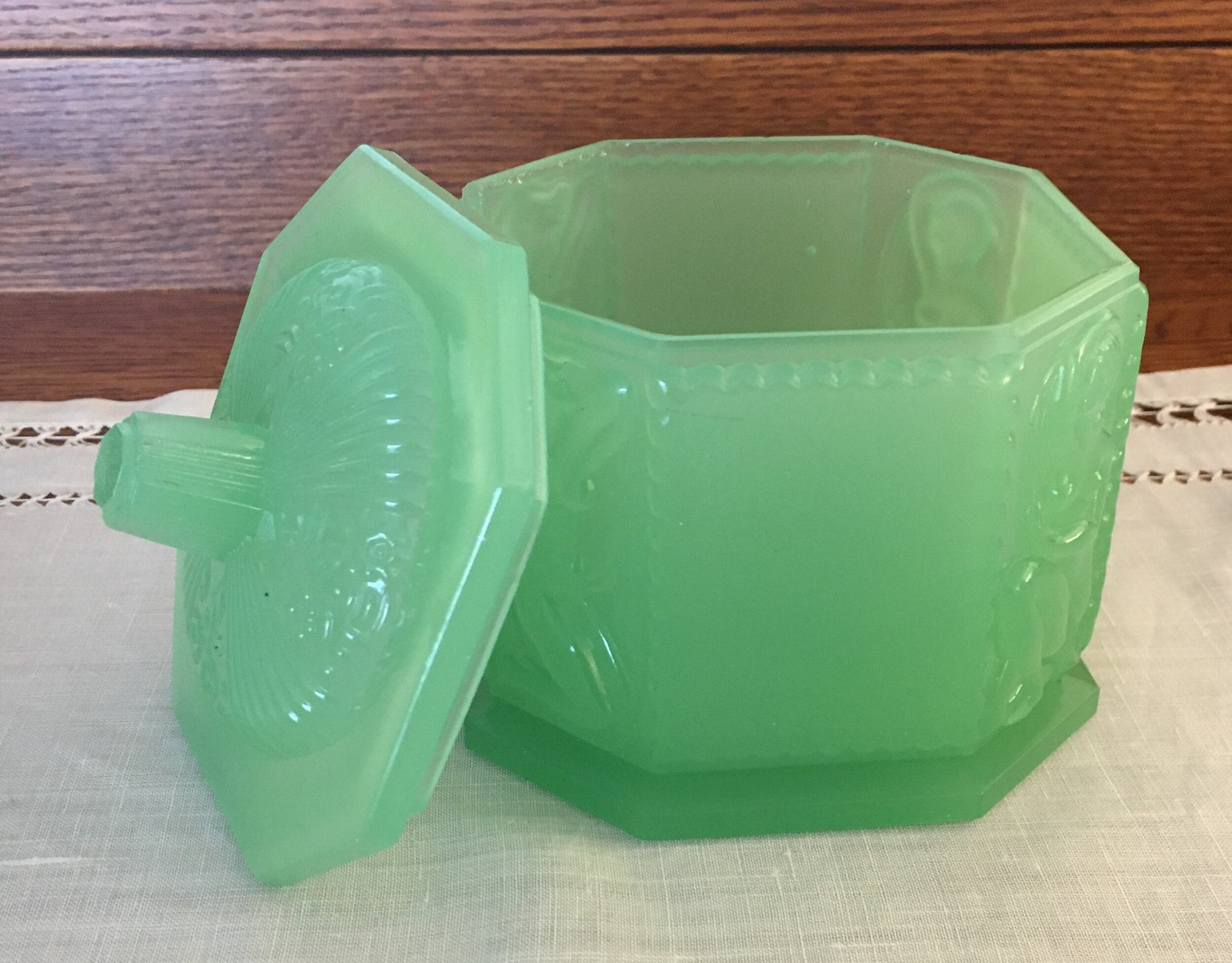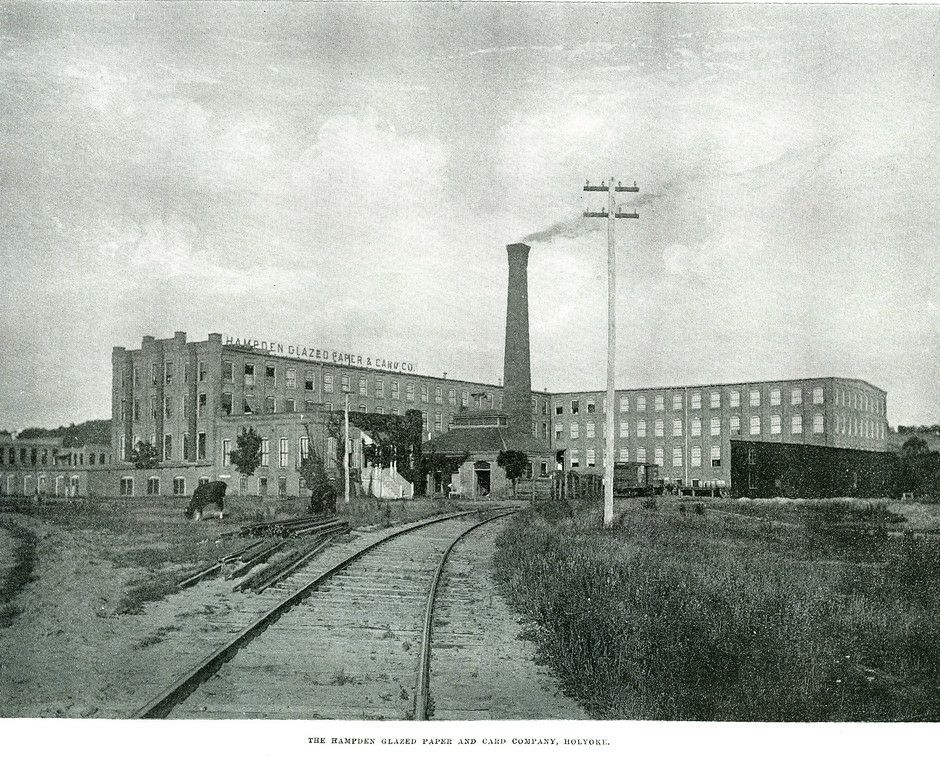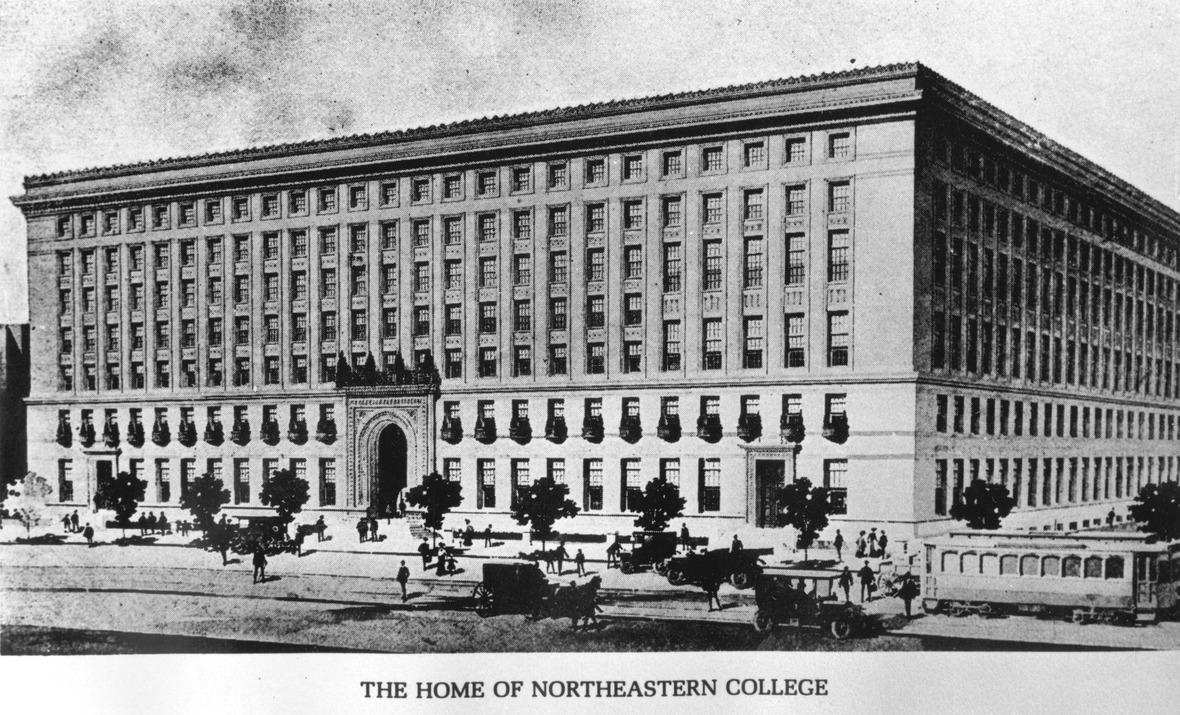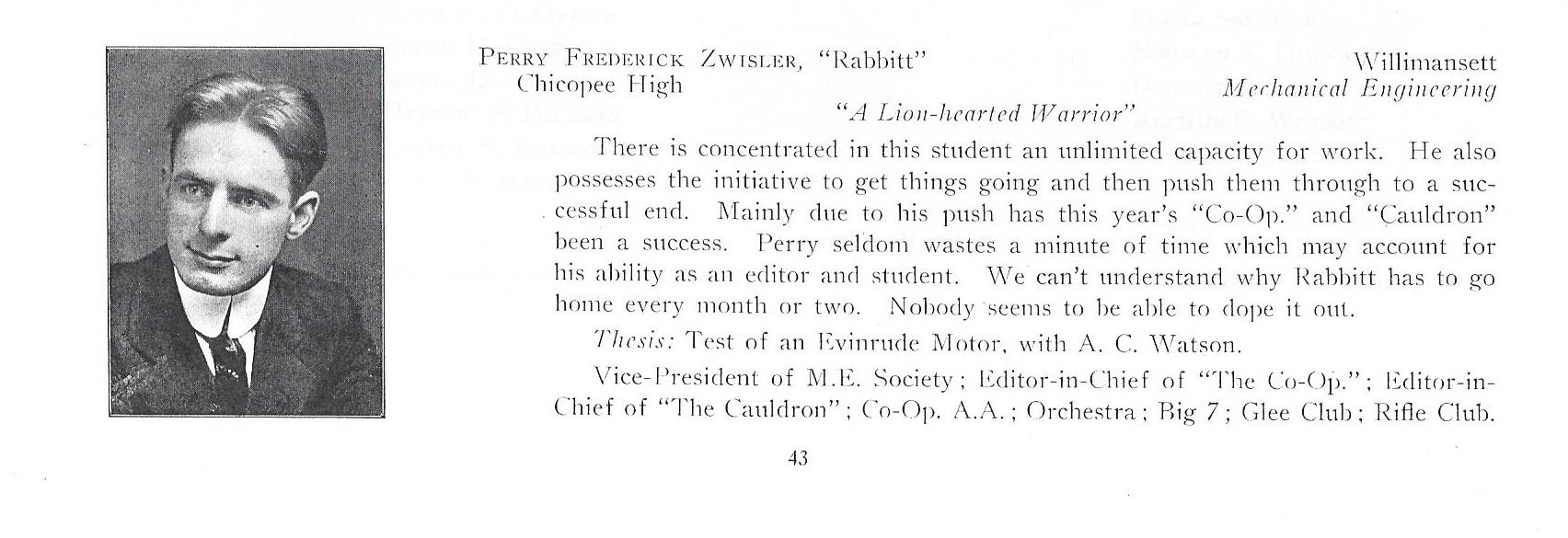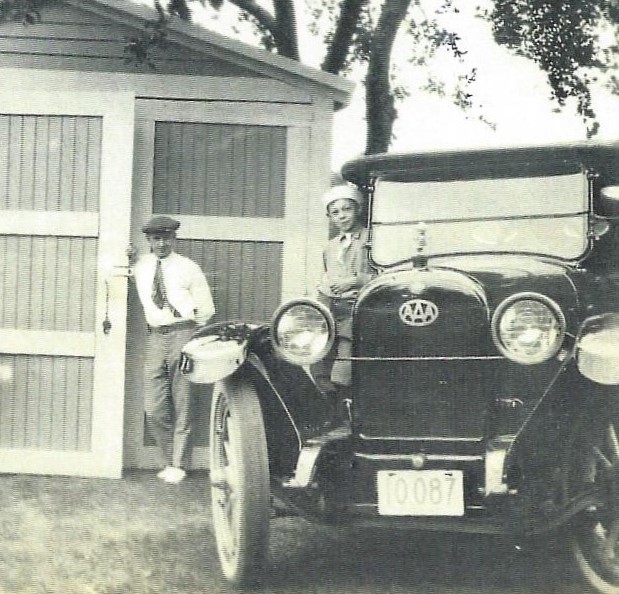My Nana, Joanna Pruitt Leonard, and her Interesting Life
My Nana, Joanna Pruitt Leonard, my mother’s mother, died when I was nine. I have no memories of her that I can remember. She became senile during the last years of her life and she lived in a rest home. We lived 300 miles away when she died. Joanna was born in the morning on 19 February 1881 in Princeton, Indiana at her grandfather Elisha Jones house. (Her grandmother Susan was a midwife.)
Entry in Elisha Jones’s Journal about his granddaughter Joanna Pruitt’s birth.
Joanna’s father, Joseph Pruitt, had died the previous July 1880 in Owensville, Indiana and her mother Emma had then moved back to Princeton, Indiana with Joanna and her older sister Helen. According to Helen, Emma was a very independent woman, as was her mother Susan, and Emma didn’t live with her parents very long. In January 1882 she took her two young daughters, Helen and Joanna, and moved to Kansas to live with her brother Alfred Jones and learn the millinery trade so she could support herself and her two daughters. While in Kansas Emma met James Howey and he finally convinced her to marry him in 1886.
Joanna Pruitt, April 1883, 2 years old, probably in Kansas
In 1887 James and Emma and the two girls moved to San Bernardino, California where James worked as a bricklayer for the rest of his life until he died in 1918.
Helen (Nellie) and Joanna Pruitt, September 1888
Joanna attended school in San Bernardino and had an active social life while she was in high school. The local newspaper mentions her several times attending various events and singing at a few of them.
Joanna Pruitt, August 1896, 15 years old
December 24, 1898, San Bernardino County Sun Newspaper Joanna was 17.
January 1, 1899, San Bernardino County Sun newspaper, Joanna was 17.
After graduating from San Bernardino High School Joanna took the examination for teachers and became a teacher.
January 5, 1900, Daily Times Index newspaper
Joanna was appointed to be a teacher at Oro Grande School and she moved to Oro Grande to teach.
August 11, 1900, Daily Times Index newspaper
Joanna continued to participate in social events in San Bernardino from time to time.
May 12, 1901, San Bernardino County Sun newspaper
July 7, 1901, Queen’s Court, Joanna Pruitt, bottom row, second from right
By 1902 Joanna was teaching 2nd and 3rd grade at Mt. Vernon School.
September 4, 1902, San Bernardino County Sun newspaper
In 1903 Joanna was granted a year’s leave from teaching to attend college at Berkeley University.
May 12, 1904, Daily Times Index newspaper
in 1904 Joanna was granted an additional leave of absence from teaching to go back to Berkeley for another year.
June 2, 1904, Daily Times Index newspaper
As she did in San Bernardino Joanna took part in social activities while at Berkeley as well.
April 12, 1905, Oakland Tribune newspaper
Joanna Pruitt, Tri Delt, Berkeley
Joanna didn’t return to Berkeley for a third year and in 1906 she returned to teaching in San Bernardino at Fourth Street School and participating in local social events.
September 6, 1906, San Bernardino County Sun newspaper
March 29. 1906, San Bernardino County Sun newspaper
A family keepsake from Joanna, her Saturday Reading Club, a precursor to today’s Book Clubs.
Joanna apparently loved to travel and the newspaper is full of descriptions of her travel throughout California and also to New Mexico to visit relatives in the early 1900’s.
During this time Joanna lived with her mother and step-father at 802 Fifth Street in San Bernardino. She continued to teach at Fourth Street School during the 1908-1909 school year.
Joanna on the porch at the Fifth Street house about 1909.
Joanna’s trip to Big Trees about 1909
In early 1909 Joanna was planning to move to the Philippines to live with her sister Helen and Helen’s husband and teach. But something happened and she decided to stay in San Bernardino and marry Willis E. Leonard. Willis was 46 and he had 5 children, his oldest child, daughter Florence, was only 5 years younger than Joanna who was 28. His wife Henrietta had died in November 1908. Willis and Joanna were married December 27, 1909 in Joanna’s home on Fifth Street in San Bernardino.
December 28, 1909 San Bernardino Sun newspaper
After the wedding Joanna and Willis left on a 6 week wedding trip by train across the country and back. While on their wedding trip Joanna collected sterling souvenir spoons from several cities that they visited.
Five sterling souvenir spoons that Joanna collected on their wedding trip in 1909 from some of the cities that they visited.
January 26, 1910, The San Bernardino County Sun newspaper
April 19, 1910 United States Census, Willis, Joanna and son Frank are at the bottom of the page, the rest of the family is on the next page
The rest of Willis’s family is at the top of the page, daughters Edith, Margaret, and Dorothy. Daughter Florence was already married and daughter Helen had died young. There was also a servant living in the house in 1910.
Willis Leonard had owned a small department store in San Bernardino, and then one in El Paso, Texas. He then returned to San Bernardino with his family in 1900 and opened another store. Later he sold the store and became manager of the Insurance, Loan, and Land Company. He was involved in a very successful real estate business in San Bernardino for a few decades until the Depression hit and he lost much of his real estate wealth.
May 24, 1910, San Bernardino County Sun newspaper
January 1, 1913, San Bernardino County Sun newspaper
Over the years Joanna was very active in San Bernardino’s social life and a member of various clubs.
April 25, 1913, San Bernardino County Sun newspaper
September 26, 1915
Leonard Home, 427 Magnolia Avenue in San Bernardino, built in 1915 by Willis E. Leonard. Elisabeth Leonard Gardner was born in this house in 1916. (This house still stands and was completely renovated and then sold in 2022.)
April 27, 1918
Probably 1918, Joanna with daughters Elisabeth and Lois
April 26, 1920
Joanna Leonard
16 January 1920, United States Census, Willis and family near the bottom of the page, by now 2 other children have joined the family, Lois and Elisabeth.
Leonard Family about 1924, Joanna back row 2nd from right, daughter Elisabeth in front of her
April 3, 1930, United States Census, Willis and Joanna Leonard with their daughters Lois and Elisabeth and Joanna’s mother Emma Howey.
July 20, 1934
Joanna Leonard
When the Depression hit Willis Leonard lost much of his real estate wealth. They sold the Magnolia house and bought a smaller house on Pershing Avenue in San Bernardino.
June 1937, Pershing House, 3233 Pershing Avenue, San Bernardino
April 5, 1940. By the 1940 United States Census Willis and Joanna were living alone in their house on Pershing Avenue in San Bernardino.
Willis and Joanna in front of the Pershing Avenue house
Leonard Family, Christmas Day 1937, Joanna back row left
1942, Willis and Joanna Leonard
Willis Leonard died October 14, 1944 at home of a heart attack. Daughter Elisabeth was there and remembered that because of war time it took the doctor quite a while to get there but Willis had died instantly.
October 15, 1944, San Bernardino County Sun newspaper
October 15, 1944, San Bernardino County Sun newspaper
October 18, 1944, San Bernardino County Sun newspaper
Joanna Leonard
Joanna continued to live in San Bernardino after Willis died until she became senile and was moved to a rest home in Pasadena where she died in 1960.
November 8, 1946, San Bernardino County Sun newspaper
July 25, 1954 San Bernardino County Sun newspaper
August 13, 1960, San Bernardino County Sun newspaper


